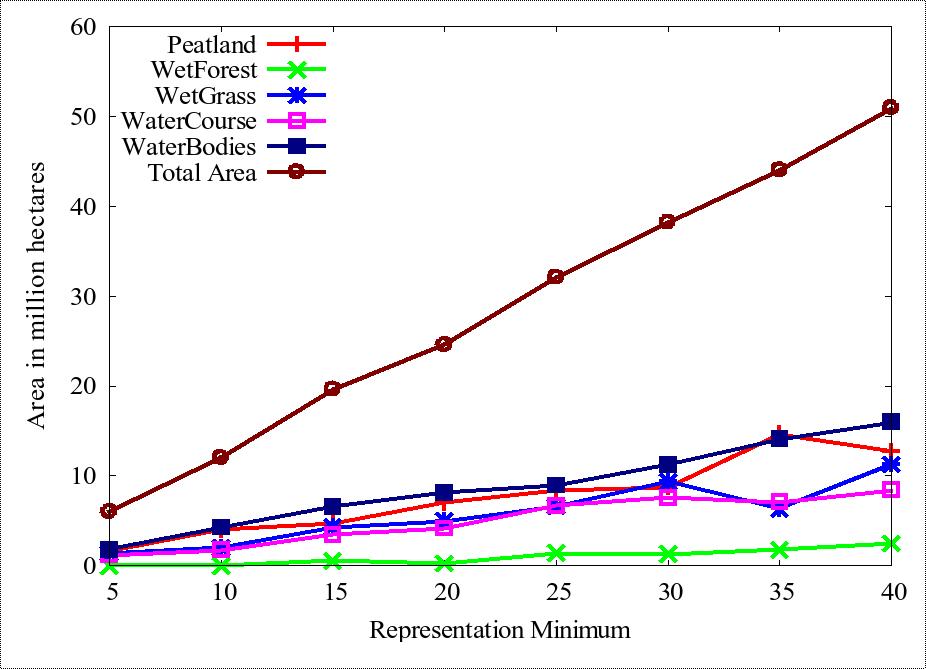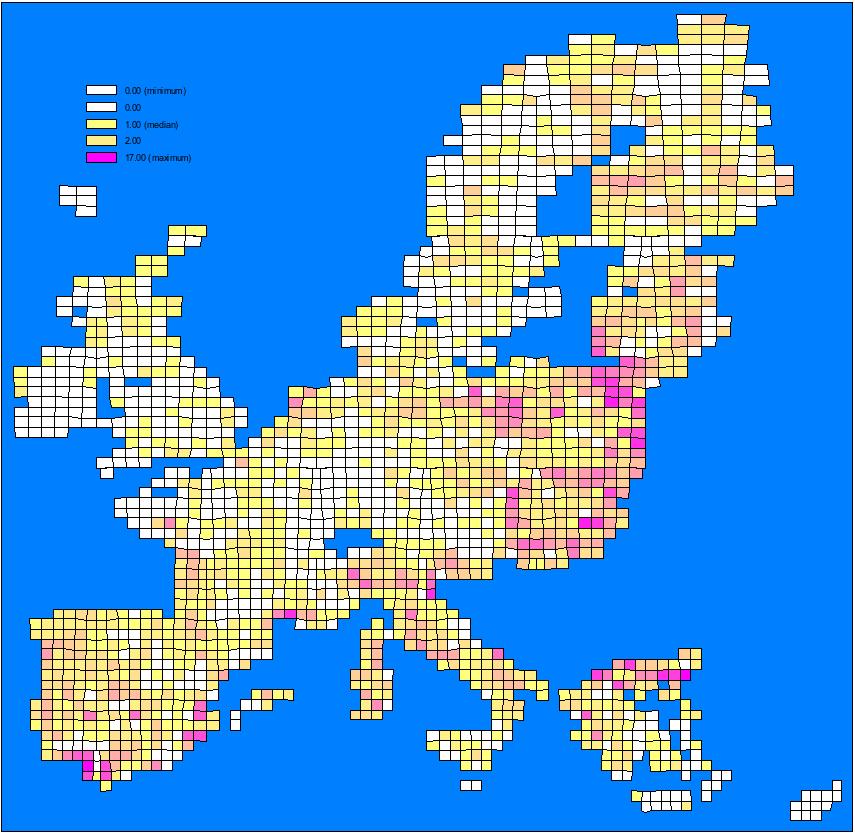Results and Outlook
Biodiversity loss takes place at unprecedented rates. Habitat loss and habitat fragmentation resulting from human land use are among the most important threat factors for biodiversity. Integration of biodiversity conservation into economic land-use models like FASOM is therefore necessary.
A biodiversity conservation module is developed that will be interlinked with FASOM. It estimates habitat allocation under several objectives and different biodiversity policies in Europe. We employ a deterministic, spatially explicit mathematical optimization model. Objectives involve minimizing the total area needed for conservation as well as minimizing the cost for setting aside land for conservation purposes. Exogenous biodiversity policies include a conservation target.
 Figure: Habitat allocation resulting from area minimization over 68 animal species
Figure: Habitat allocation resulting from area minimization over 68 animal species
 Figure: Covered animal species per cell for target 40 (dark colours indicate high numbers; maximum: 17)
Accounting for conservation requirements in land use modelling affects opportunity costs.
The implementation of the conservation module into FASOM allows evaluation of competition and complementarities between traditional agriculture and forestry, bioenergy and biomaterial plantations, and nature reserves.
We can furthermore explore synergies and trade-offs between conservation, climate, energy, and other policies which affect land use and agricultural and forest markets.
Figure: Covered animal species per cell for target 40 (dark colours indicate high numbers; maximum: 17)
Accounting for conservation requirements in land use modelling affects opportunity costs.
The implementation of the conservation module into FASOM allows evaluation of competition and complementarities between traditional agriculture and forestry, bioenergy and biomaterial plantations, and nature reserves.
We can furthermore explore synergies and trade-offs between conservation, climate, energy, and other policies which affect land use and agricultural and forest markets.
